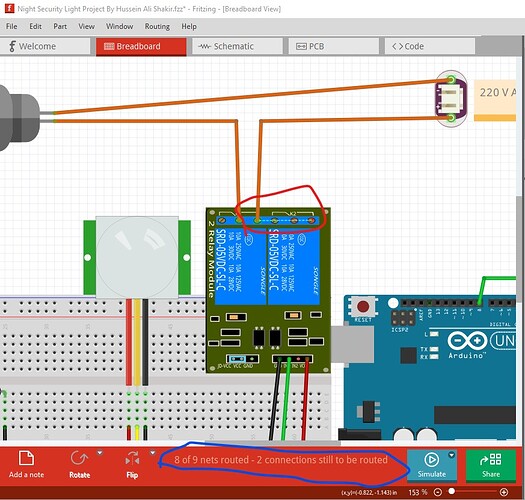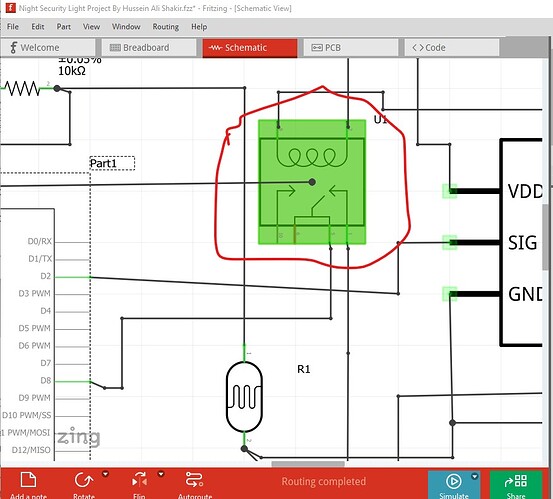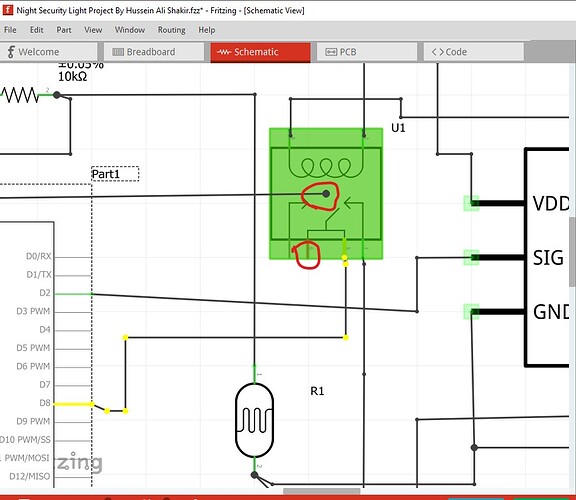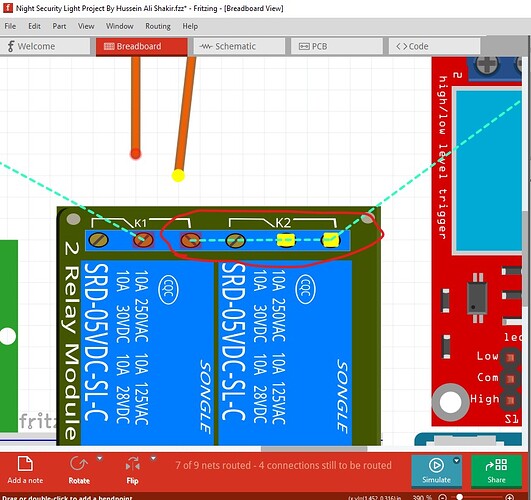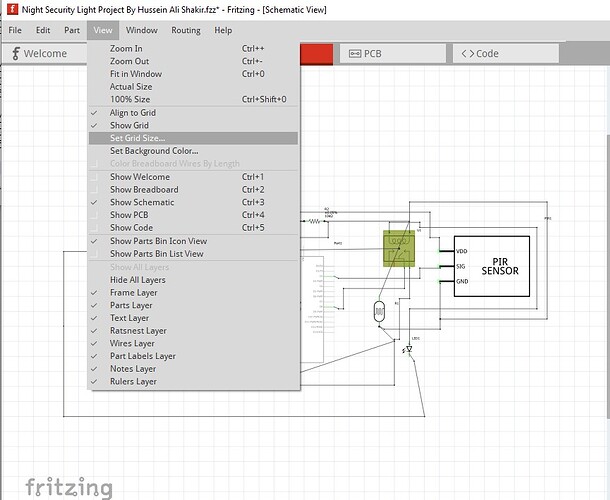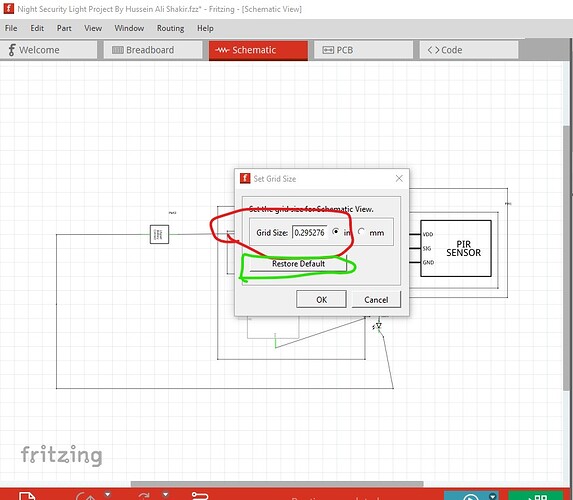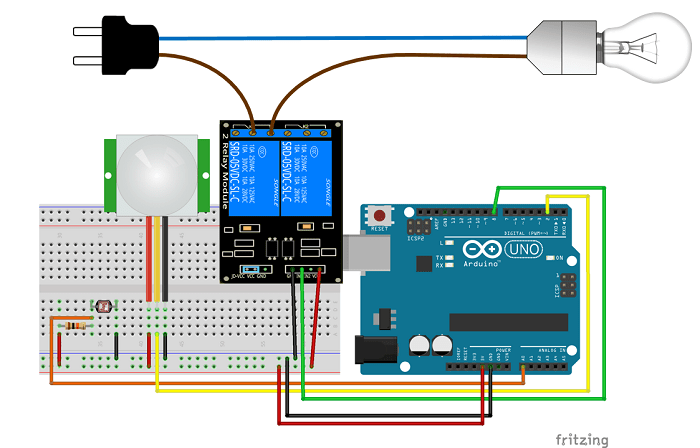int relay = 8;
volatile byte relayState = LOW;
int PIRInterrupt = 2;
// LDR pin is connected to Analog 0
int LDRPin = A0;
// LDR value is stored on LDR reading
int LDRReading;
// LDR Threshold value
int LDRThreshold = 300;
// Timer Variables
long lastDebounceTime = 0;
long debounceDelay = 10000;
void setup() {
// Pin for relay module set as output
pinMode(relay, OUTPUT);
digitalWrite(relay, HIGH);
// PIR motion sensor set as an input
pinMode(PIRInterrupt, INPUT);
attachInterrupt(digitalPinToInterrupt(PIRInterrupt), detectMotion, RISING);
// Serial communication for debugging purposes
Serial.begin(9600);
}
void loop() {
// If 10 seconds have passed, the relay is turned off
if((millis() - lastDebounceTime) > debounceDelay && relayState == HIGH){
digitalWrite(relay, HIGH);
relayState = LOW;
Serial.println(“OFF”);
}
delay(50);
}
void detectMotion() {
Serial.println(“Motion”);
LDRReading = analogRead(LDRPin);
if(LDRReading > LDRThreshold){
if(relayState == LOW){
digitalWrite(relay, LOW);
}
relayState = HIGH;
Serial.println(“ON”);
lastDebounceTime = millis();
}
}
